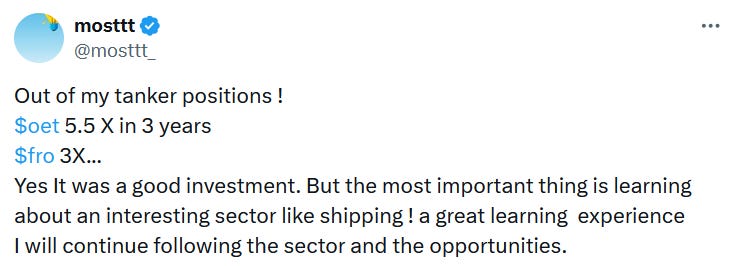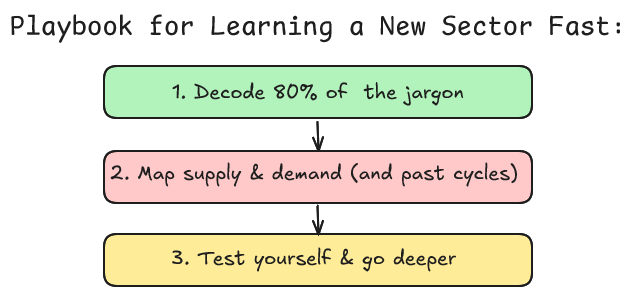The 3-Step Playbook for Learning a New Sector Fast
Inspired by my 5× tanker trade
Hello, Fellow Stock Pickers
4 years ago, I spent a month buried in shipping reports.
Freight rates, shipbroker notes, obscure terms like VLCCs and scrapping cycles.
That deep dive turned into a 5× return on tanker stocks.
It was a bet on a sector driven by cycles.
this isn’t my main investing strategy.
But when it works, it works big.
But for a generalist investor, the barrier to entry is high.
you need to understand a lot before you even start deeper analysis.
Back then, it took me a full month just to get the sector straight in my head.
I reviewed my notes and turned them into a playbook. A shortcut you can use anytime you tackle a new sector using AI. :
1) Decode the jargon (so you can think clearly)
In any sector, the first barrier is the language.
Good news: 20% of terms explain 80% of what you’ll read.
How to do it (fast) with AI:
Use ChatGPT (Thinking mode) for this step, it’s great at this.
Ask it to:
List 20–25 must-know terms for the sector.
Explain each in plain English (1–2 short lines).
Tie each term to revenue/margins (why it matters).
Give one simple example (numbers if helpful).
Tell you what to watch next (KPI or data source).
Cite a source or write “Data gap: …” instead of guessing.
Or just steal my ready to use prompt :



